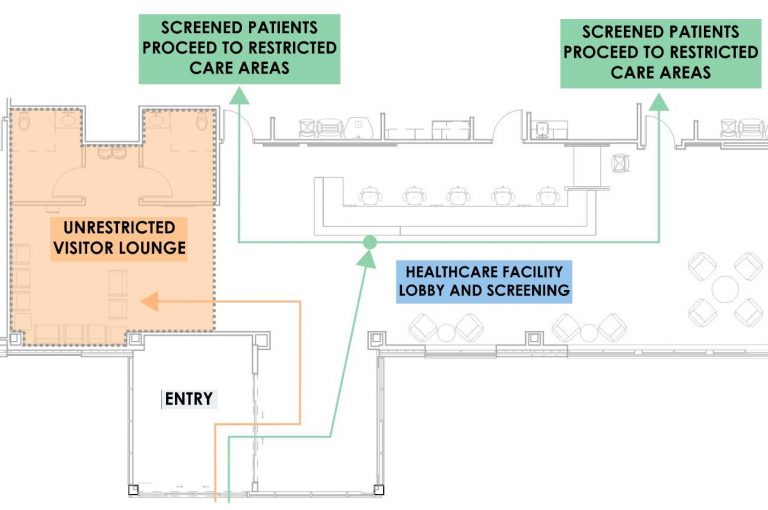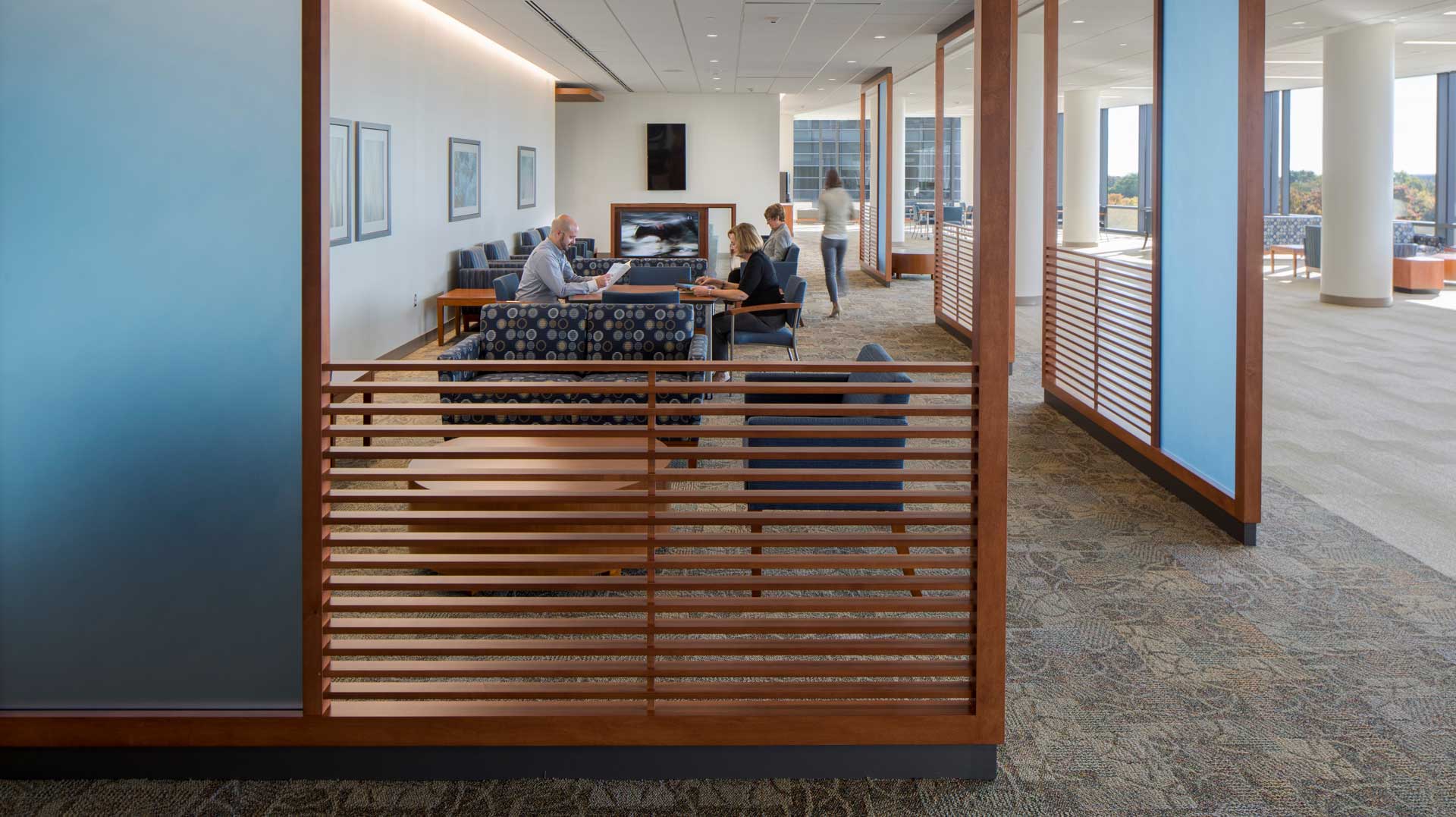Like many people, my routine medical care appointments in 2020 were delayed and rescheduled. I have recently had a flurry of appointments to catch up on that care. As I went to each appointment, I had a different waiting experience. I also have accompanied a family member to several outpatient appointments and an inpatient stay in the last few weeks. Each healthcare visit differed in the restrictions placed upon me as the visitor and caregiver, and offered different waiting experiences as well. All of these appointments made me think about what the new reality for the visitor experience and waiting room design should be. Healthcare providers have implemented new strategies in the past year as a response to Covid-19 to minimize waiting and time spent inside the healthcare facility. As we move forward in this Covid-19 era, a waiting room is still a necessary space in a healthcare facility even if its use is minimized.
The New Reality
The waiting experience begins before you even leave your house for a medical appointment. For my recent visits I was able to pre-register online. I filled out the “paperwork” online and paid the co-pay so that I didn’t have to do that in person at my visit. Many healthcare systems now offer “e-check in” so that the routine demographic and insurance information is collected before you arrive at the appointment’s physical location. I think pre-registration strategies will become the standard as patients and providers see the value of online interactions that can make the healthcare experience flow smoother and quicker.
Minimize Waiting
For clinic visits, just in time arrivals are a good strategy to minimize waiting. Patients are advised to wait in their car until the provider is ready to see them, then they are alerted by a text or phone call to enter the facility. For patients who arrive in a car, this strategy can work well. But what about patients who arrive by medical transport, taxi or public transportation? These patients still need a place to wait until the time of their appointment. A small waiting area will remain a necessity in outpatient facilities.
Along with just in time arrivals, self-rooming is another strategy that can be used to reduce the need for a large waiting room. At check-in, a patient is directed to proceed directly to the exam room where they will be seen for their appointment. This limits the time they spend in the public spaces of the healthcare facilities and limits their contact with other visitors. Patients feel more satisfied because they perceive less waiting time occurring as well. One of our healthcare clients has successfully used this strategy on a recent project. https://www.zastudios.com/aurora-health-center-mount-pleasant/
Social Distancing
Each medical facility I have visited recently had different strategies for social distancing in the waiting room. Some are effective and attractive, others are not. Placing chairs in front of a registration desk to enforce social distancing is not welcoming. I think barriers, like acrylic panels that provide separation and visibility, are an effective way to promote distancing yet provide an aesthetically pleasing solution. Separating visitors from each other to reduce the risk of virus transmission is here to stay in some form. Social distancing will continue to be beneficial in waiting areas, especially in high volume sections such as emergency departments.
Reimagine the Waiting Experience
“Nobody liked the waiting room previously, but now it seems inconceivable that people will be willing to sit next to possibly infectious strangers while they wait for an appointment or a loved one’s procedure…All public spaces including waiting rooms, lobbies, and dining facilities will have to be carefully planned and designed to create greater physical separation between people, with appropriate queuing.“ We have seen that waiting space is still necessary in a healthcare facility, even with implementation of new strategies like pre-registration and just in time arrivals. As architects and designers, our challenge now is to reimagine waiting room design to provide comfort, social distancing and a positive experience.
Creating a Visitor Lounge
Due the Covid-19 restrictions for a diagnostic procedure, I had to drop off my family member at the hospital’s front door and was told to pick him up in a couple of hours. Since this hospital is an hour from our home, returning home to wait wasn’t an option. I also didn’t want to sit in the parking lot so I went to Costco and shopped. As much as I love Costco, I don’t see retail spaces as a viable long-term option to replace the hospital waiting room. Waiting in the car for a long period of time is also not a comfortable option in colder climates.
I think it is time to redesign the visitor and waiting experience at hospitals. Airports have changed the waiting and visitor experience over the years as security requirements have changed. Healthcare facilities can create a similar experience of unrestricted and restricted waiting zones. In this new paradigm, caregivers and family members could wait in a lounge in the unrestricted area. The ideal experience would include individual seating pods to facilitate social distancing and amenities such as a nourishment station and restrooms to provide comfort. Furniture that provides visual and acoustic privacy and connectivity would allow family members to work remotely while they wait. Separating the visitor and patient traffic upon entering the facility can reduce the need for visitors to travel into the healthcare facility, much like an airport.

The New Healthcare Waiting Experience
As we have seen in the explosion of growth in telehealth visits in the last year, Covid-19 has required a faster adoption of tools like pre-registration and check in to reduce physical interactions and speed up the in-person healthcare visit. As we move forward in our new reality, we also need to redesign the waiting room experience in response. Incorporating social distancing measures in the waiting room is a need that is here to stay. Another need is creating spaces where caregivers and visitors can wait for their loved ones that provide comfort, infection control and physical separation.


